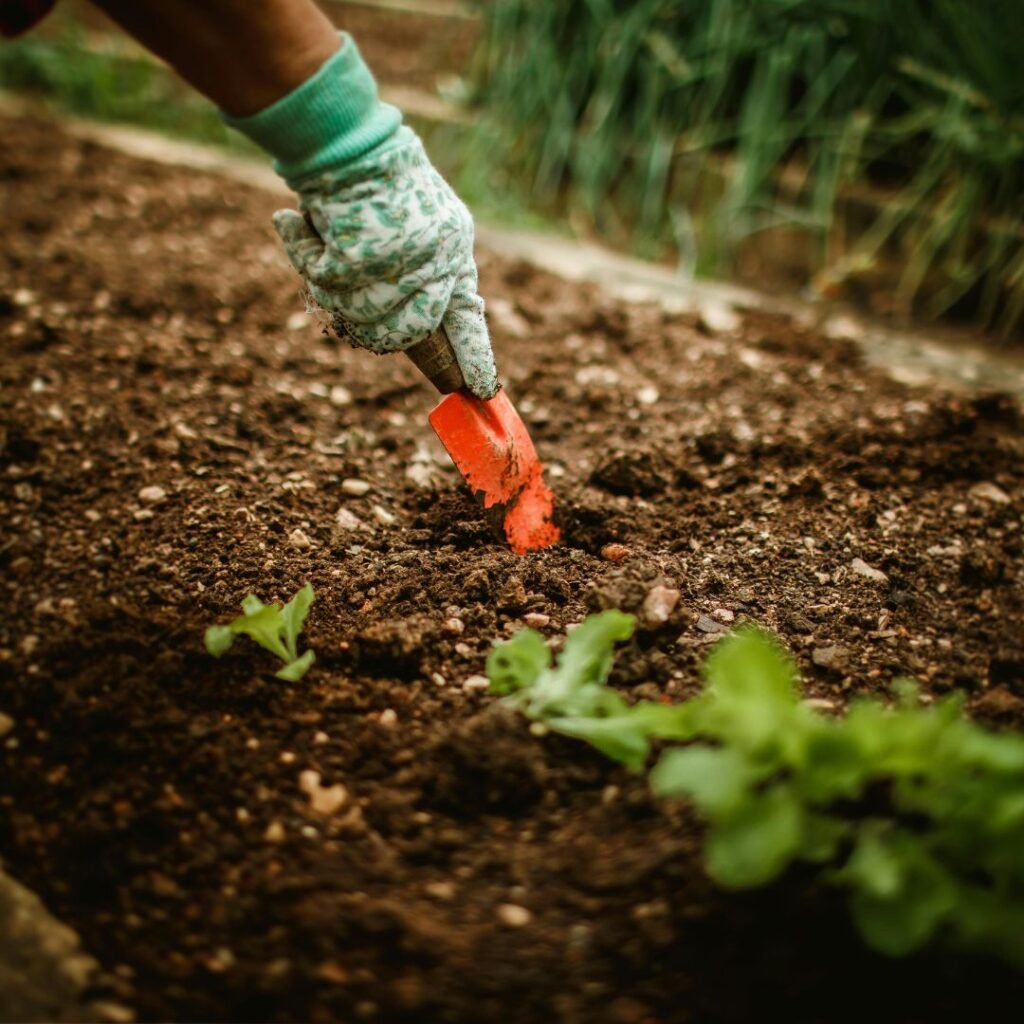Growing a Vegetable Garden at Home is more than a hobby — it’s a tiny revolution in your backyard, balcony, or windowsill. Whether you have a patch of soil, a set of pots, or a sunny sill, you can transform dead space into a continuous harvest of fresh, flavourful vegetables. This guide is SEO-optimized, practical, and broken into clear sequential steps so you can build, maintain, and enjoy your vegetable garden with confidence.

Why start a Vegetable Garden at Home?
A home vegetable garden gives you control over what you eat, lowers grocery bills, reduces food miles, and connects you to seasonal cycles. It also offers proven mental-health benefits: fresh air, purposeful activity, and the small daily wins of watering, transplanting, and plucking your first ripe tomato. Ready? Let’s dig in.
What you need (tools & materials)
Before you begin, gather—so you don’t stall mid-step:
Containers: raised beds, pots, or repurposed crates.
Good-quality potting mix and compost (or homemade compost).
Seeds and/or seedlings of vegetables suited to your climate.
Hand tools: trowel, pruning shears, watering can or hose with gentle nozzle.
Mulch: straw, leaves, or wood chips.
Trellis or stakes for climbing plants.
pH test kit (optional but useful).
Labels and a notebook (or digital app) to track plant dates.
These items will appear as you read the steps — have them ready to streamline the process.
Step 1 — Choose your space and microclimate (First thing to do)
Decide where your Vegetable Garden at Home will live. Observe sunlight for 3–4 days: most vegetables need 6–8 hours of direct sun. Note wind patterns and shade from trees or buildings.
Tip based on this step: map out a simple sun chart on paper (morning, noon, afternoon) — use it to place sun-loving plants where they’ll get the best hours and shade-tolerant crops where light is softer. This avoids later transplant shock and improves yields.
Step 2 — Pick the right containers and prepare soil (Second step)
If using containers, ensure drainage holes. For in-ground beds, loosen soil and add 2–4 inches of compost. Aim for a fluffy, well-draining mix with steady moisture retention.
Tip based on this step: make a “soil cocktail” by mixing 60% potting mix, 30% compost, and 10% perlite or coarse sand for heavy clay soils; this reduces waterlogging and keeps roots happy without frequent watering.
Step 3 — Select easy, high-return vegetables (Third step)
Start with forgiving crops: lettuce, radishes, spinach, bush beans, cherry tomatoes, and herbs like basil. These offer quick wins and teach you seasonal rhythms.
Tip based on this step: plant a mix of fast (radish, lettuce) and slow (tomato, pepper) growers together so you get continuous harvests while the larger crops mature.
Step 4 — Plan layout and succession planting (Fourth step)
Sketch a simple bed map. Use vertical space (trellises for peas and cucumbers) and succession planting — sowing a new row every 2–3 weeks — to keep production steady.
Tip based on this step: draw the map to scale on graph paper; label square feet for each crop and rotate families (solanaceae, brassicas, legumes) seasonally to reduce pests and nutrient depletion.
Step 5 — Sow, transplant and water smartly (Fifth step)
Follow seed packet depth and spacing. Transplant seedlings on a cool morning or evening. Water at the base early in the day to reduce disease risk.
Tip based on this step: use a simple “soak and check” method — water deeply once, then probe the soil with your finger to a 2-inch depth; only water again when that zone is slightly dry. This trains roots to go deep and improves drought resilience.
Step 6 — Feed and mulch for resilience (Sixth step)
Top-dress with compost every 4–6 weeks and use balanced organic fertilizer if growth slows. Mulch conserves moisture, suppresses weeds, and keeps soil temperature stable.
Tip based on this step: layer 2–3 inches of organic mulch after seedlings are established — but keep mulch a thumb’s width away from stems to prevent rot.
Step 7 — Pest and disease management (Seventh step)
Monitor daily for chew marks, yellowing leaves, or odd growth. Use handpicking, row covers, neem oil, or insecticidal soaps as first-line, least-toxic options.
Tip based on this step: introduce a small “beneficial insect station” — plant alyssum, dill, or fennel at the plot edge to attract predatory insects like ladybugs and lacewings that naturally reduce pests.
Step 8 — Harvest timing and post-harvest care (Eighth step)
Harvest regularly — many vegetables produce more when picked young (e.g., sugar snap peas, baby greens). Clean and store produce promptly to maintain quality.
Tip based on this step: keep a harvest log — record dates, yields, and taste notes. Over time you’ll learn which varieties suit your palate and microclimate best.
Unique growing hacks (each tied to a step)
From Step 1: create a reflective board (white-painted board) to increase light on shady sides.
From Step 2: reuse coffee grounds sparingly around acid-loving crops (tomatoes, blueberries).
From Step 3: stagger sowing of quick crops in shallow trays to transplant into gaps.
From Step 4: use string guides to keep straight rows and efficient spacing.
From Step 5: set a removable drip bag (soaker bottle) for new transplants for the first two weeks.
From Step 6: brew compost tea (steep compost in water overnight) and use as a gentle foliar feed.
From Step 7: rotate physical repellents — garlic spray one week, diatomaceous earth zone the next — to confuse persistent pests.
From Step 8: blanch and freeze excess greens at peak freshness to enjoy winter flavour.
Seasonal checklist (quick reference)
Spring: soil prep, sow cool-season crops (lettuce, peas).
Summer: stake tomatoes, harvest continuously, shade tender seedlings midday if heat spikes.
Fall: plant garlic, cover crops, tidy up beds.
Winter (if mild): grow hardy greens; mulch heavily.
Common mistakes (and how to avoid them)
Overwatering — test soil moisture before irrigating.
Crowding plants — respect spacing to prevent fungal disease.
Ignoring pH — test once if plants show nutrient deficiency symptoms.
Avoid these, and your Vegetable Garden at Home will reward you.
Facts & Advantages of a Vegetable Garden at Home
Fact: Homegrown vegetables can contain higher nutrient levels when harvested ripe and eaten quickly, compared to supermarket produce that travels long distances.
Fact: Companion planting (e.g., basil near tomatoes) can improve flavour and reduce certain pests.
Advantage: Lower grocery costs — a well-managed small garden can offset weekly vegetable expenses.
Advantage: Environmental benefit — less packaging, shorter transport, and increased biodiversity in your yard.
Advantage: Health & wellbeing — gardening increases light physical activity, lowers stress, and encourages healthier eating habits.
Final encouragement
A Vegetable Garden at Home doesn’t need to be perfect — it needs your curiosity and patience. Start small, keep good notes, and treat each season as an experiment. With the sequence above (space → soil → plant selection → layout → sowing → feeding → pest management → harvest), you’ll move from tentative tugs at seedlings to confident, repeatable success. Grow something today — your future self (and your dinner plate) will thank you.



